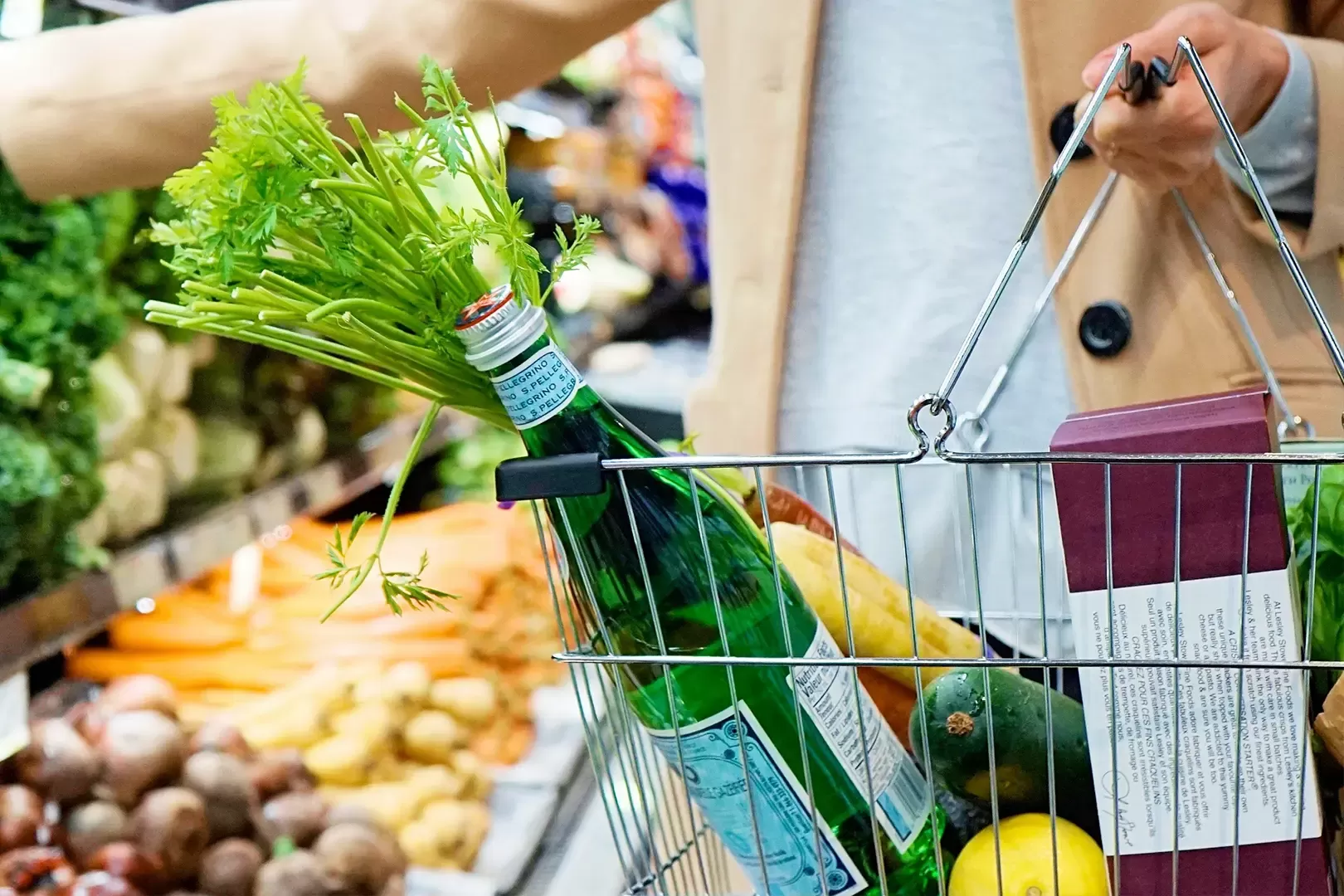Greater Food Safety and Quality Control in Food & Beverage Software
Barcodes are widely used in the food and beverage industry to track products and ensure their safety and quality. Here are some examples of how barcodes are used in the food and beverage industry
1. Product Tracking
Key Benefit: Ensures each item can be traced through every stage—from production to final sale.
- Production Line: Barcodes on raw materials and finished goods let manufacturers track batches in real time, preventing mix-ups and maintaining high standards.
- Distribution Centers: As products move from factories to warehouses or retailers, scanning barcodes at each checkpoint updates the system with their exact location.
- Retail Shelves: Retailers scan barcodes to verify shipments, confirm product counts, and update on-shelf inventory.
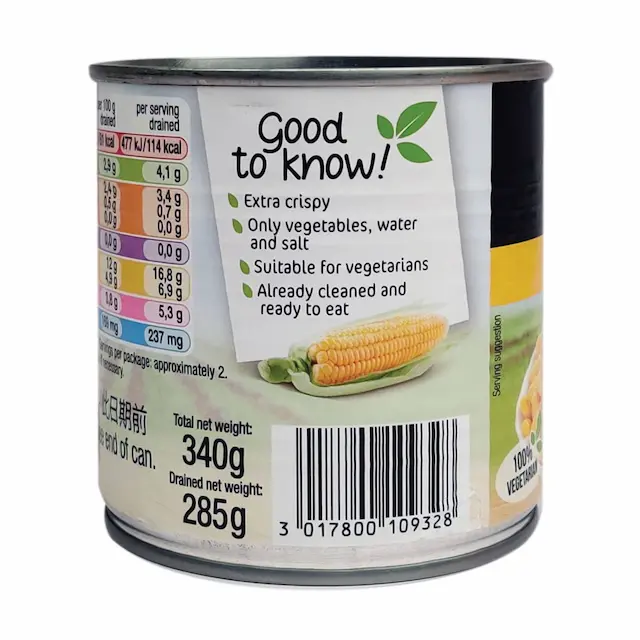
Example Scenario
A beverage company produces fruit juices in multiple flavors. Each case is labeled with a UPC code that encodes flavor, size, and expiration date.
- Production Line: Workers scan each newly filled box to link it to a production batch.
- Warehouse Arrival: The same barcode is scanned upon arrival at the distribution center, confirming correct item count and product type.
- Store Receiving: When cases are delivered to stores, staff scan the barcodes to ensure the correct flavors and quantities have arrived.
2. Quality Control
Key Benefit: Maintains standards for freshness, safety, and regulatory compliance by recording essential information (lot codes, expiration dates, etc.).
- Incoming Raw Materials: Scanning barcodes ensures raw ingredients meet quality requirements.
- In-Process Checks: During production, scanning batch codes can tie each ingredient to its origin, verifying freshness or correct temperature conditions.
- Final Inspection: Before shipping, barcodes enable quick verification of product-specific criteria (e.g., packaging integrity, correct labeling).
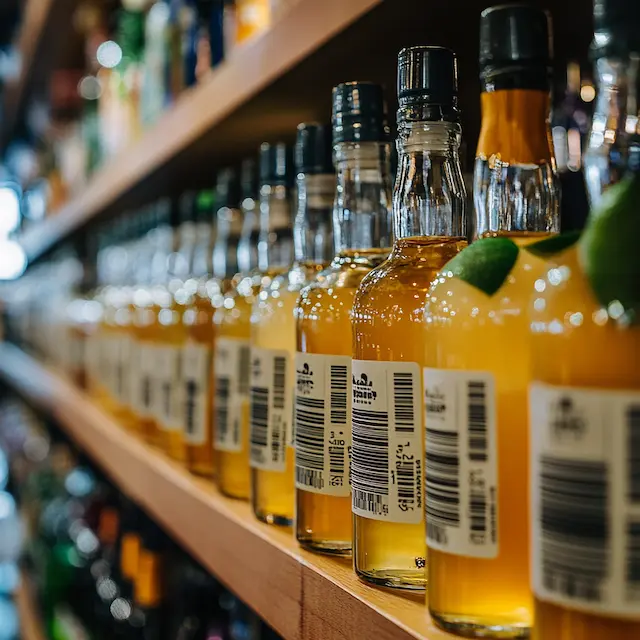
Example Scenario
A yogurt producer uses GS1 DataBar on each container to store the expiration date and batch number.
- Raw Milk Check: Raw milk shipments arrive with a barcode linking them to lab testing results.
- Production Stage: Each yogurt cup’s label includes a unique batch identifier, scanned to confirm it meets the required pH and temperature controls.
- Outbound Check: A final scan ensures all cups with near-expiration dates are shipped first, preserving freshness for end consumers.
3. Traceability
Key Benefit: Quickly identify and isolate issues (e.g., contamination, incorrect labeling) by tracing products to their source.
- Ingredient Origins: Each ingredient has a barcode linking it to the farm or supplier.
- Recall Management: If a problem arises, scanning the barcodes in question helps pinpoint the specific batch and location of affected items.
- Regulatory Audits: With every batch or ingredient tied to a scannable code, record retrieval is quick and verifiable.
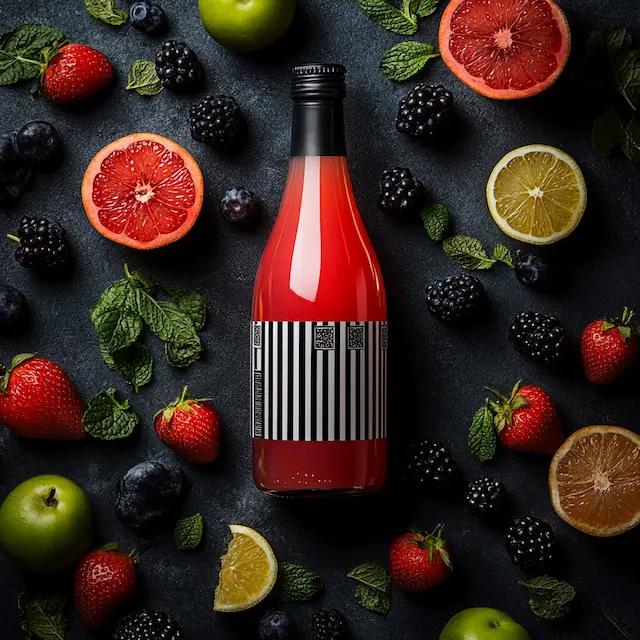
Example Scenario
A canned vegetable processor receives produce from multiple farms. Each shipment has a DataMatrix code detailing the farm, harvest date, and field location.
- Receiving Dock: Workers scan the codes to log produce origin in the processing database.
- Processing: The vegetables are cleaned, chopped, and canned in distinct batches, each with a unique code linking back to the field data.
- Potential Recall: In the event of a contamination concern, the company scans the codes to determine which cans originated from a specific field, recalling only those specific products instead of every can produced that day.
4. Inventory Management
Key Benefit: Maintains accurate stock levels, reduces spoilage, and ensures proper rotation of goods—particularly important for perishable items.
- Real-Time Updates: Scanning items during receiving, moving, and shipping helps keep the system’s stock counts up to date.
- FIFO/FEFO Compliance: Barcodes that include expiration dates support “First In, First Out” (FIFO) or “First Expired, First Out” (FEFO) to reduce waste.
- Automated Reordering: If stocks drop below predefined thresholds, the system can trigger reorders based on barcode scan data.
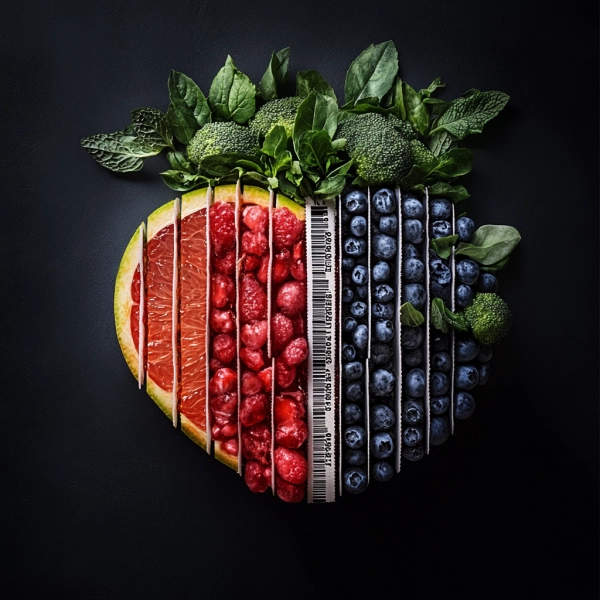
Example Scenario
A cold storage facility keeps meats and dairy at precise temperatures. They use Interleaved 2 of 5 barcodes on pallet labels.
- Arrival: Pallets are scanned upon arrival, marking each product’s expiration date and adding it to the warehouse management system (WMS).
- Rotation: When restocking shelves, workers use handheld scanners to identify items nearing expiration, placing them at the front for faster turnover.
- Reordering: As inventory falls below a set threshold, the WMS automatically flags the need for new shipments from suppliers.
5. Ensuring Food Safety
Key Benefit: Identifies and responds swiftly to any contamination or safety concerns.
- Hazard Analysis: By linking barcodes to hazard or allergen data, you can quickly check if items are being stored under safe conditions.
- Rapid Response: If an item is flagged, scanning triggers immediate quarantine or disposal procedures.
- Regulatory Compliance: Regulatory bodies often require detailed tracking of food items; barcode data collection simplifies reporting requirements.
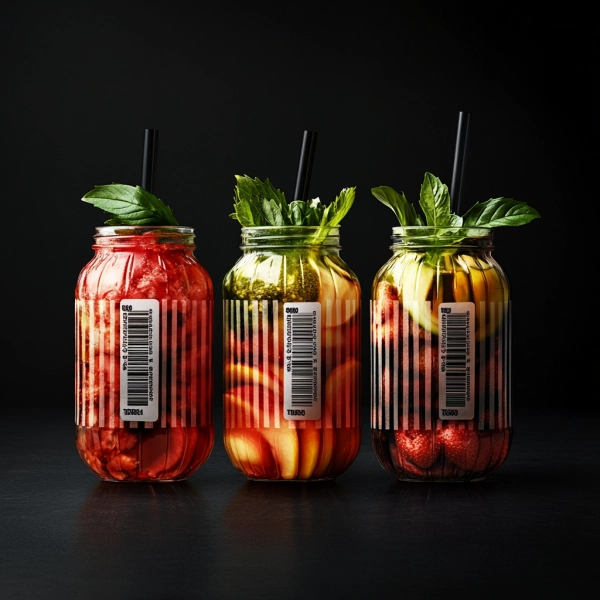
Example Scenario
A bakery produces gluten-free and regular bread in the same facility. They use Code 128 barcodes containing allergen flags.
- Material Check: Each ingredient pack is scanned, confirming whether it’s gluten-free or not.
- Segregated Production: Workers scan barcodes before using ingredients in the gluten-free area to prevent cross-contamination.
- Shipping: Boxes of gluten-free bread have clear allergen-free barcodes that can be scanned to instantly verify compliance with safety protocols.
6. Customer Engagement
Key Benefit: Provides consumers with additional information—nutritional data, recipes, or promotions—right from their smartphones.
- QR Code on Packaging: Customers scan for ingredient lists, allergen data, or instructions on how to prepare the product.
- Marketing Campaigns: Scannable codes can drive loyalty programs or direct consumers to social media pages for coupons and offers.
- Transparency: Builds consumer trust by offering full ingredient sourcing details, especially valuable for ethical, organic, or health-focused brands.
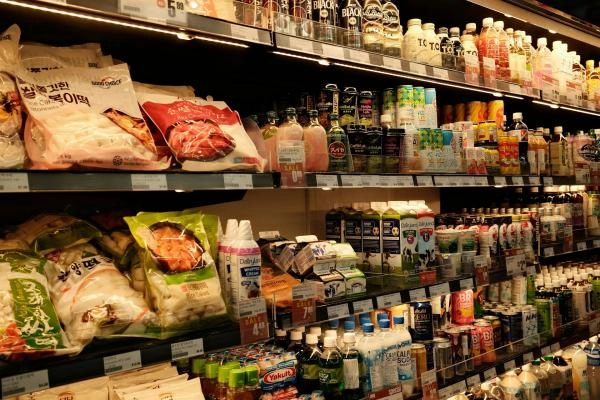
Example Scenario
A premium coffee brand places QR Codes on each bag:
- Packaging: The QR Code links to tasting notes, farm location, and roast date.
- Customer Scan: Shoppers in-store scan the code on their smartphone to learn about the coffee’s origin, ethical sourcing, and brewing tips.
- Feedback Loop: The same QR Code can lead customers to a survey or loyalty program page, capturing direct feedback on product quality and taste preferences.
7. Mobile Barcode Reading
Key Benefit: Empowers on-the-go scanning using smartphones or tablets, without specialized hardware.
- Warehouse Usage: Employees use rugged smartphones to scan incoming produce, update inventory counts, or check product quality.
- Retail Floor: Store associates verify stock levels or provide instant product info to customers.
- On-Site Inspections: Quality assurance teams visiting farms or production sites scan barcodes to log condition and temperature data immediately.
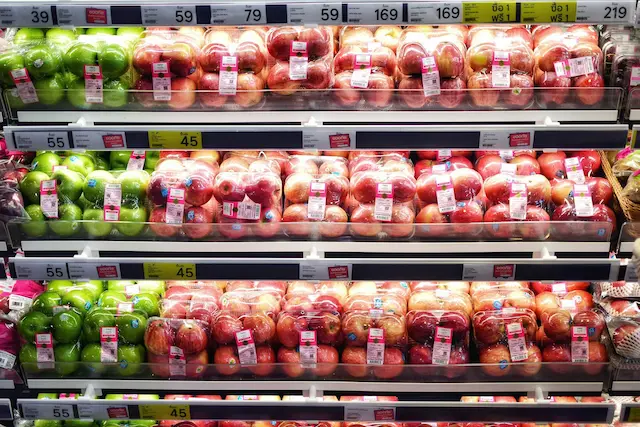
Example Scenario
A franchise restaurant chain with multiple locations employs a mobile app for food safety checks.
- Receiving Inventory: Managers use the app to scan deliveries’ barcodes, confirming the freshness and recording any temperature notes.
- Kitchen Prep: Chefs scan items before use to check expiration dates, ensuring the first opened container is used first.
- Customer Transparency: A front-of-house staff member can scan any product in question to reassure customers about allergen information or origin.
Most used barcode types in the food industry
Similarly with other industries, the usual suspects are present here too. You can't miss the UPC/EAN barcodes, but also the code 128, QR and DataMatrix.
1. UPC (Universal Product Code)
Why It’s Used:
- Retail Standard: UPC is the default barcode format for retail products in the United States and Canada.
- Speed and Compatibility: Quickly recognized by checkout scanners, ensuring fast and seamless point-of-sale transactions.
- Widespread Adoption: Because it’s essentially the “universal language” for retail, suppliers, distributors, and retailers can exchange data easily.
Typical Uses:
- Individually packaged goods (e.g., a single can of soda, a bag of chips).
- Products intended for direct retail sale, where scanning occurs at a grocery checkout.
2. EAN (European Article Number)
Why It’s Used:
- International Retail: Similar in function to UPC but used primarily outside North America.
- GS1-Compliant: EAN is part of the GS1 system, helping businesses maintain global standards for product identification.
- Store and Warehouse Compatibility: Works seamlessly with most retail and inventory software worldwide.
Typical Uses:
- Packaged foods, beverages, or other consumer goods sold in Europe and many other global markets.
- Cross-border supply chains where consistent product identification is crucial.
3. GS1 DataBar (Formerly Reduced Space Symbology, RSS)
Why It’s Used:
- Extended Data Storage: Can encode additional details like expiration date, batch/lot numbers, and weight in a compact format.
- Fresh and Perishable Items: Ideal for produce, meat, and other perishables that require date tracking.
- Traceability and Quality Control: Enables more granular product information, which helps manage recalls or quality checks.
Typical Uses:
- Fresh produce and other perishable goods needing expiry date or batch tracking.
- High-volume retailers that want more traceability without significantly larger barcodes on labels.
4. Code 128
Why It’s Used:
- Highly Flexible: Encodes alphanumeric data efficiently, including lot numbers and extended product information.
- Compact and Dense: Stores more data than a simple UPC in roughly the same or smaller space.
- Warehouse and Logistics: Frequently used for internal tracking of cartons and pallets within food processing or distribution facilities.
Typical Uses:
- Inner packaging or pallets where additional details (e.g., batch, weight, or production date) are needed.
- Quality control labeling in manufacturing lines.
5. Interleaved 2 of 5 (ITF) / ITF-14
Why It’s Used:
- Durable Printing: Good for printing on corrugated boxes or other non-uniform surfaces, often found in food and beverage logistics.
- Pallet and Case Labeling: Encodes 14-digit Global Trade Item Numbers (GTINs), linking to GS1 standards.
- Distribution Efficiency: Simplifies scanning large shipments, reducing manual entry errors.
Typical Uses:
- Cases, cartons, and pallets of food or beverage items in warehouse or transport scenarios.
- Shipping labels for bulk deliveries.
6. QR Codes
Why It’s Used:
- Consumer Engagement: Can store URLs, recipe links, allergen data, or promotional content.
- High Capacity: Stores much more data than a 1D barcode (e.g., product stories, traceability info, cooking instructions).
- Mobile-Friendly: Easily scanned by smartphones, bridging the gap between physical products and digital content.
Typical Uses:
- Product packaging that invites shoppers to learn more about ingredients, nutrition, or brand story.
- Marketing campaigns offering loyalty programs or interactive experiences.
7. DataMatrix
Why It’s Used:
- Compact 2D Format: Encodes a large amount of data in a small area—ideal for smaller packages.
- Damage Resistance: Can often be read accurately even if partially damaged.
- Traceability: Supports detailed product information, crucial for high-end or specialty food items where track-and-trace is vital.
Typical Uses:
- Small, individual items (e.g., tiny spice containers) where space is limited.
- Specialty or premium foods requiring robust batch or origin tracking.
Conclusion
In the food and beverage industry, barcode scanning:
- Strengthens Traceability: Helps pinpoint the origin of every product and ingredient, ensuring faster recalls and safer products.
- Improves Inventory Accuracy: Reduces waste from spoiled or misplaced items and keeps shelves correctly stocked.
- Enhances Quality Control: Ensures that items meet exacting standards for freshness, safety, and labeling.
- Engages Consumers: Provides extra product insights and fosters brand loyalty through QR Codes and mobile interaction.
By leveraging barcodes (such as UPC, GS1 DataBar, Code 128, QR Codes, and more) alongside mobile scanning solutions, food and beverage companies can gain deeper visibility into their supply chain, ensure compliance with regulatory requirements, and deliver high-quality products to customers reliably and efficiently.
